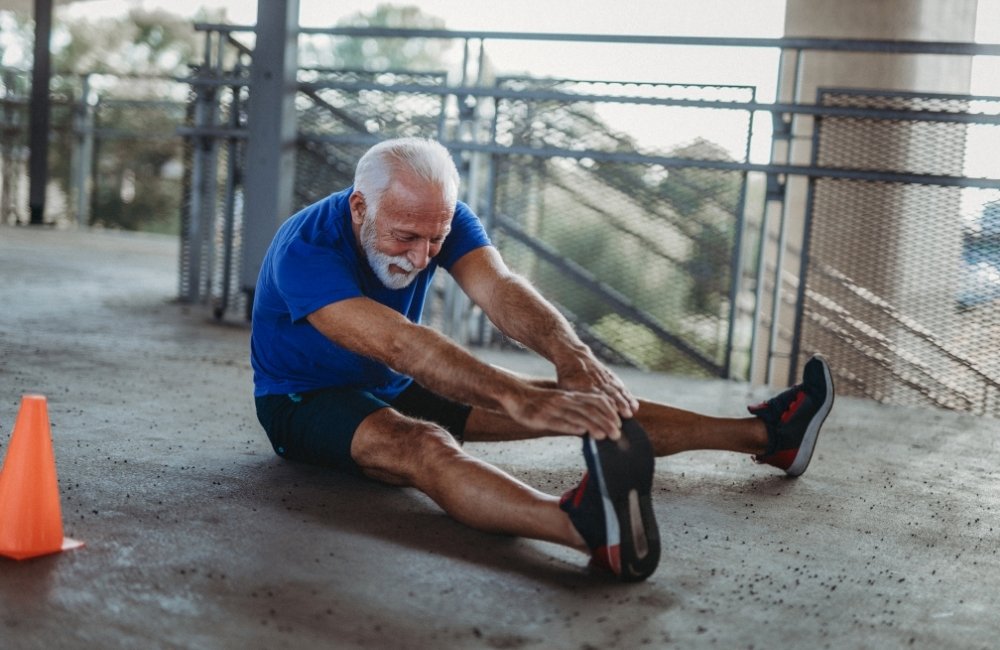
One of the biggest challenges of aging is loss of mobility and strength. According to a study published in the Journal Clinical Interventions In Aging, 30-50% of muscle mass and strength get lost between the age of 30-80.
Furthermore, the rate of muscle loss accelerates after the age of 50, losing between 12-15% loss per decade.
For most people, stretching is much less exciting than performing cardio and resistance exercise. But just because stretching may not be very fun, this doesn’t mean it isn’t important.
Best of all, with just 5 easy, gentle stretches, you can significantly improve your health. In this article, we will discuss the importance of regular stretching and outline the top 5 total body stretches.
Why Should I Stretch?
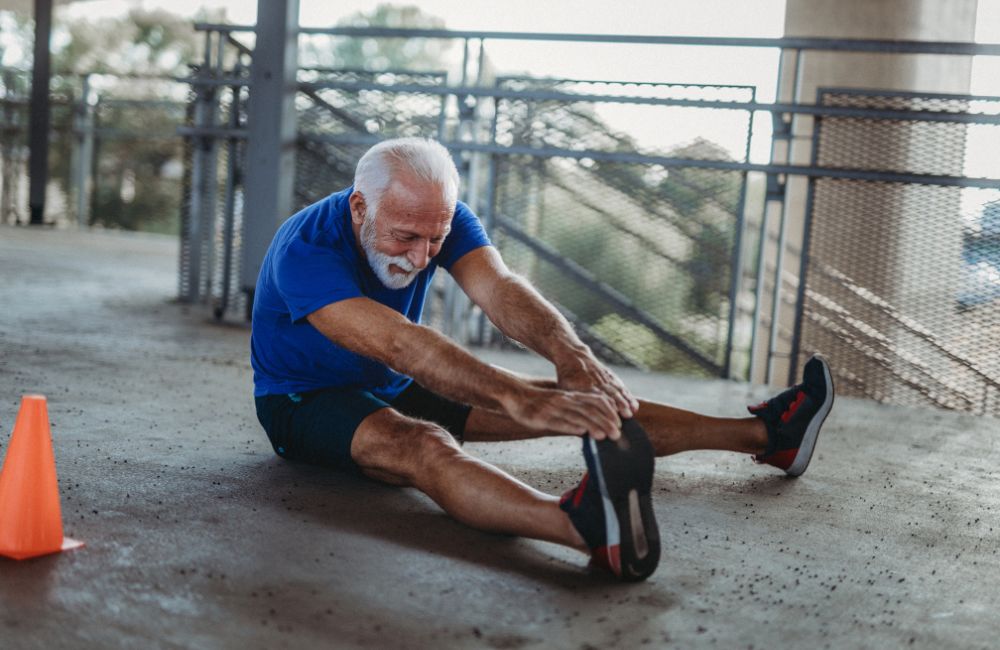
Some people question the importance of stretching (1). After all, won’t stretching our tissues lead to weak, unstable joints?
In actuality, stretching is generally associated with increased strength and better athletic performance.
Furthermore, stretching is often correlated with decreased risk of injury (2). That being said, this is only true if we incorporate strengthening exercises as well.
In the end, we want to balance strength and flexibility throughout all the joints of our body.
How Often Should I Stretch?

There is some small disagreement amongst fitness professionals as to how often we should stretch. Some groups will advocate for daily stretching. On the other hand, certain professionals will recommend stretching only 1-3 times per week.
In my opinion, it’s hard to stick with something every single day. For many people, attempting to perform stretches and exercises daily will lead to burnout.
Furthermore, if they miss a day of stretching, some of these individuals will become discouraged. They may, in some cases, give up on their stretching goals altogether after a single missed session.
For this reason, I advocate for stretching 3 days a week. Granted, this may not necessarily align with ALL of the research in this area. But this will provide a reasonable weekly goal that even the busiest people can fit into their schedules.
You’ll also like:
10 Best Stretching Exercises to Make You More Flexible
8 Restorative Stretches for Your Shoulders, Neck, and Lower Back
30+ Muscle Diagrams That’ll Teach You How To Stretch Every Body Part
The Top 5 Stretches for Improved Health and Wellness
In this section, I will outline my 5 favorite stretches that are appropriate for nearly all exercisers. Of course, if you have specific concerns or needs, you should always consult your doctor before completing any exercise program.
To reiterate: try this stretching routine at least 3 times per week. You should hold each stretch for 30 seconds per stretch (unless otherwise specified), per side (where applicable).
Also, you should attempt to complete 4 sets of each stretch per session, aiming for a feeling of “moderate discomfort” during each stretch.
1. Cat-Cow
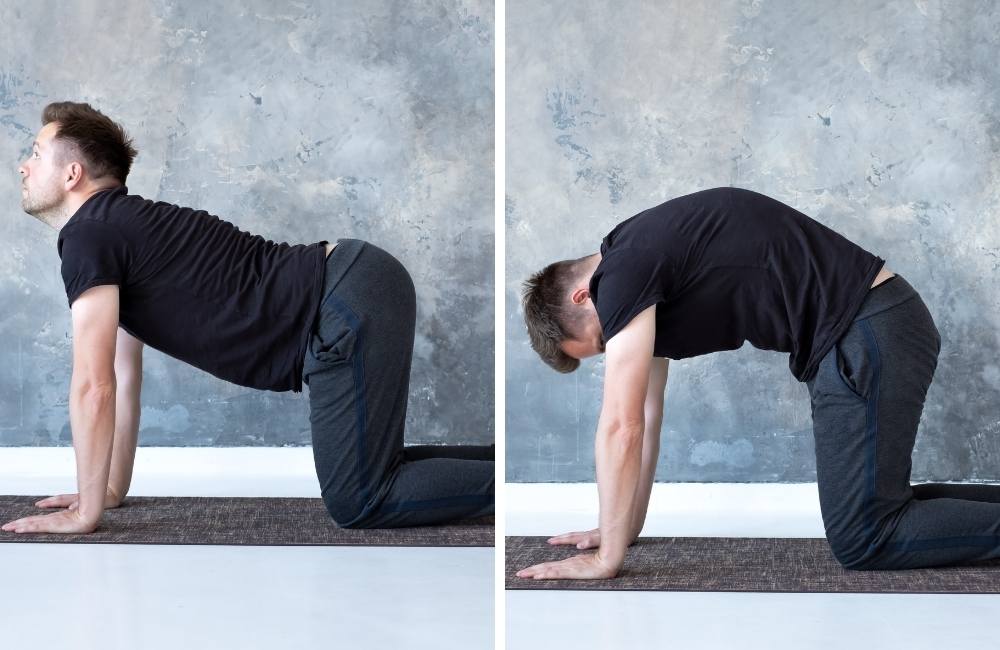
When we think about athleticism, we need to look no further than our animal friends. Animals demonstrate incredible levels of flexibility, power, and other desirable attributes. Therefore, many of our best stretches are named after members of the animal kingdom.
The cat-cow stretch is an excellent move for spinal health. This stretch encourages a form of spinal “flossing”, in which the spine is stretched in extreme opposite directions.
How to Perform:
- Place your hands and knees on the floor, spaced equally apart.
- Your back should be perfectly flat and this starting position should not cause discomfort.
- If the pressure from the floor bothers your knees, feel free to use a pillow or a mat as a pad.
- To start, allow your stomach to sag towards the floor as you bend your head up, looking forward.
- Hold this position for 30 seconds.
- Next, reverse the motion by “arching” your back and bending your chin toward your chest.
- Hold this position for 30 seconds.
- Repeat this alternating pattern for 4 rounds per session.
2. Banded Overhead Shoulder Stretch
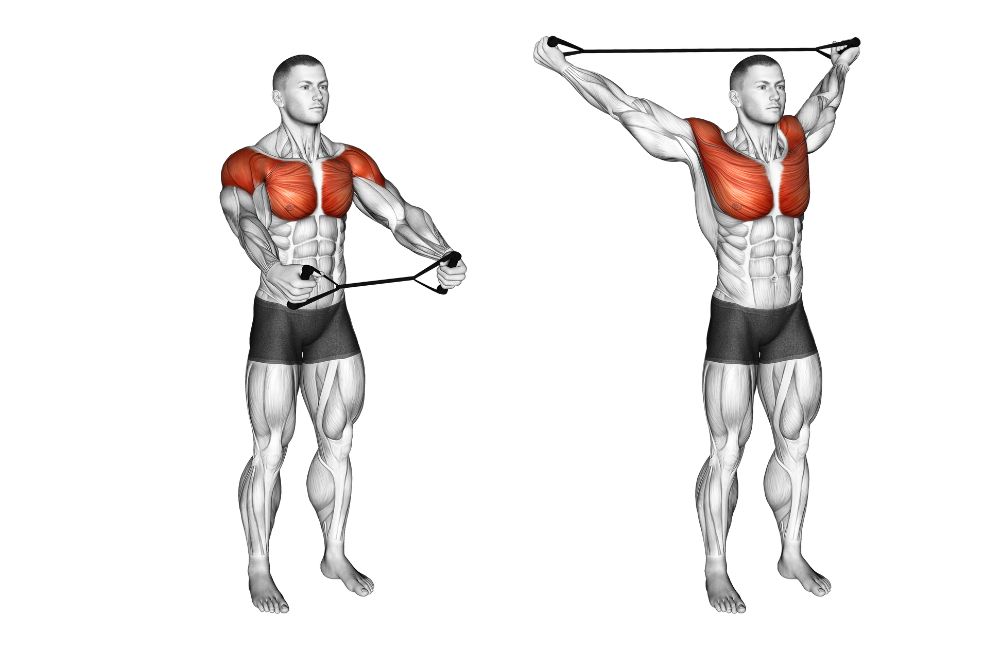
If you don’t have a band, a stick will work perfectly well for this exercise.
This stretch combines active muscular tension with passive stretching. In this way, the movement leads to incredible shoulder and upper back mobility.
How to Perform:
- In standing, grasp the band in both hands.
- Your hands should be roughly shoulder width apart.
- Keeping consistent tension on the band, slowly raise your arms up overhead, reaching as far back as you can comfortably with straight arms.
- Once you’ve reached the end of your range, hold the stretch for 30 seconds.
- Repeat 4 times per session.
3. Adductor Wall Stretch
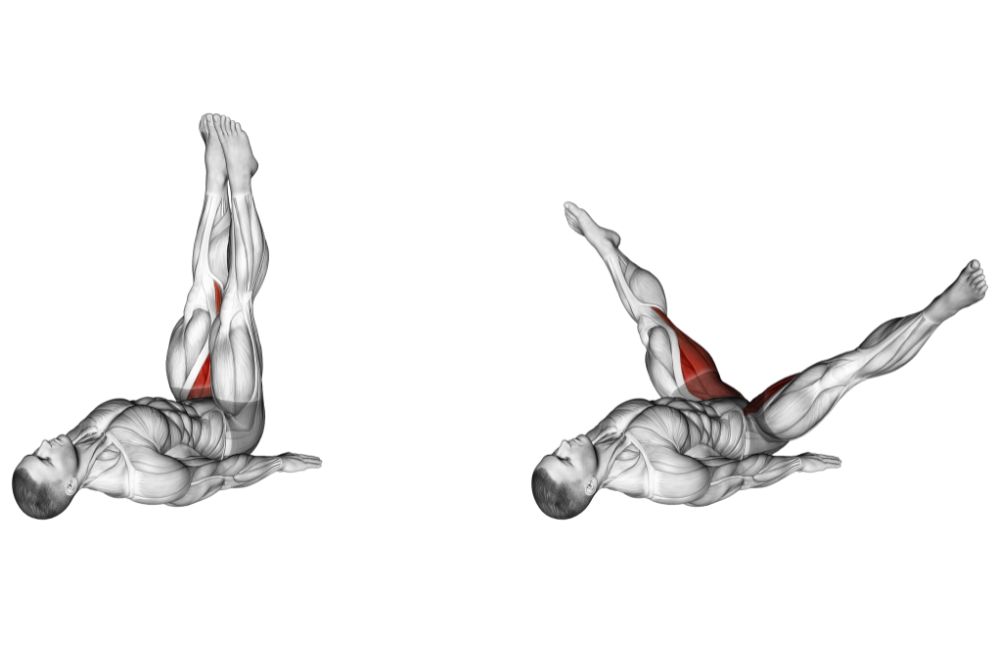
Your adductor muscles are often neglected. Most of the focus of stretching is placed on the hip flexors and hamstrings.
This is not to say that these areas shouldn’t be stretched! In fact, you can scroll down to see stretches for some of these regions.
This stretch will help to decrease hip and back pain. Furthermore, it can go a long way towards increasing athletic performance.
How to Perform:
- Lie on your back, with your buttocks as close to the wall as possible.
- Extend your legs straight, so that your heels and the back of your legs are supported on the wall.
- Slowly, spread your legs out to the side until you feel a stretch in your inner thigh area.
- Hold this position for 30 seconds and repeat it 4 times.
4. Dead Hang Stretch
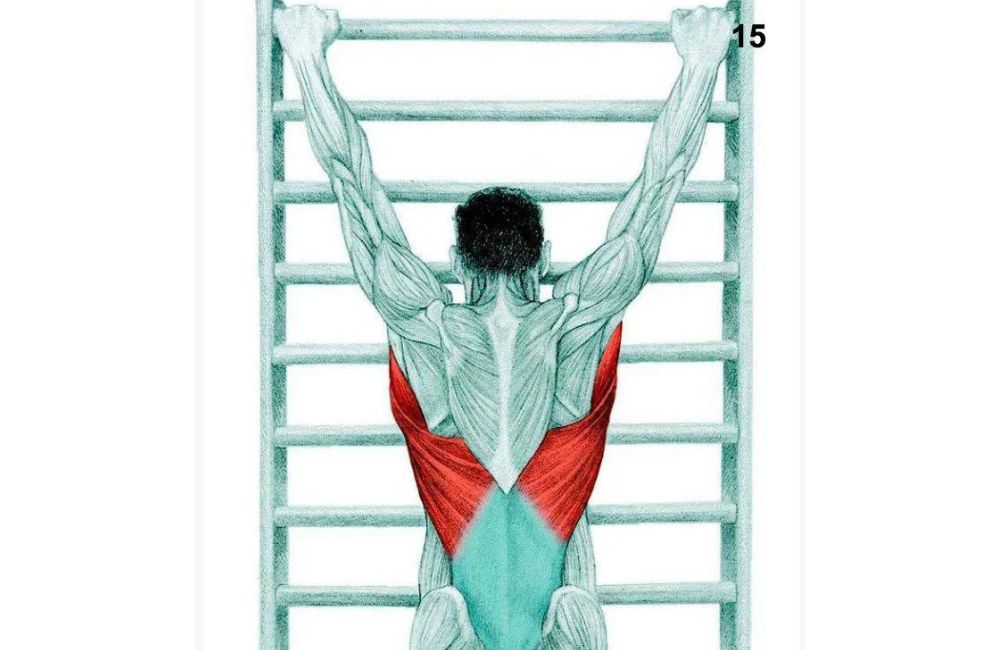
As simple as it sounds, active hanging can provide incredible stretching benefits. The weight of your legs pulls down on your spine, causing a stretch throughout your spine.
For many people, the limiting factor for this stretch is grip strength. Therefore, be sure to exercise your forearm muscles in order to improve your performance on this exercise.
How to Perform:
- Grasp a pull-up bar (or a very firm, stable surface from which you can hang unimpeded).
- Do not let your shoulders sag, keep your lat muscles activated.
- Maintain this position for 30 seconds and repeat it 4 times.
5. Kneeling Hip Flexor Stretch
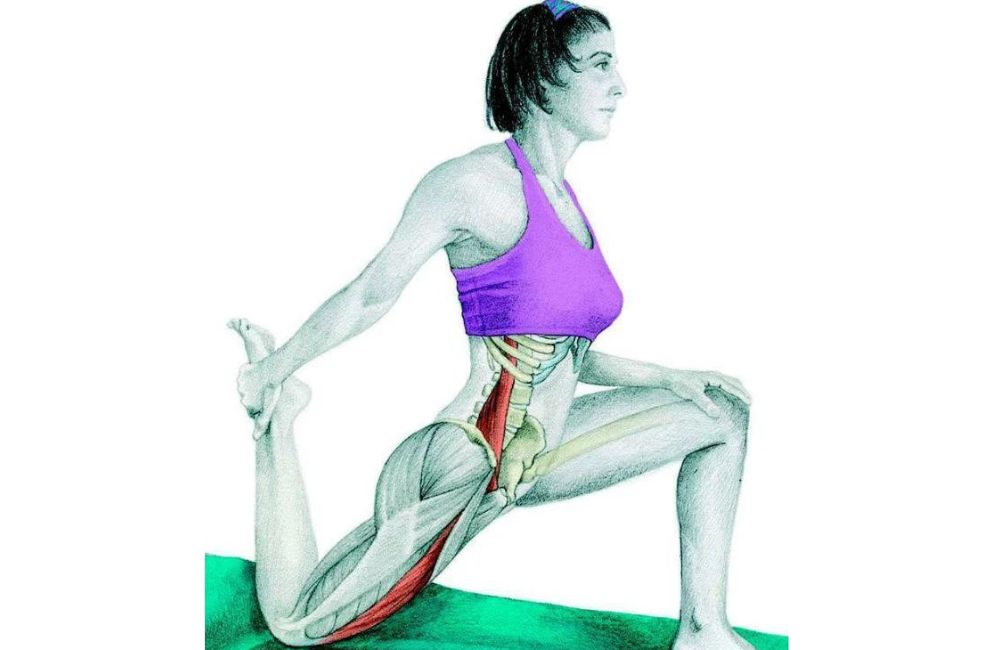
As was mentioned earlier, the hip flexors are a tight, troublesome area for many people. Therefore, stretching out this region goes a long way toward decreasing pain and improving the range of motion.
How to Perform:
- Place both knees on the floor with your trunk straight.
- If possible, place both hands on your ankles and lean backwards, keeping your hips pushed forward.
- You’ll feel a nice stretch through your hip flexors and abdominal muscles at this point.
- Hold this stretch for 30 seconds and repeat it 4 times.
Conclusion
Stretching provides tons of benefits for athletes and sedentary individuals alike. Best of all, it doesn’t take much time or many stretches to achieve these benefits. If you aren’t regularly stretching right now, try out this routine and see what you think!
Works Cited
- Page P. (2012). Current concepts in muscle stretching for exercise and rehabilitation. International journal of sports physical therapy, 7(1), 109–119.
- Chabene H. (2019). Acute Effects of Static Stretching on Muscle Strength and Power: An Attempt to Clarify Previous Caveats. Frontier Physiology, Sec. Exercise Physiology https://doi.org/10.3389/fphys.2019.01468


